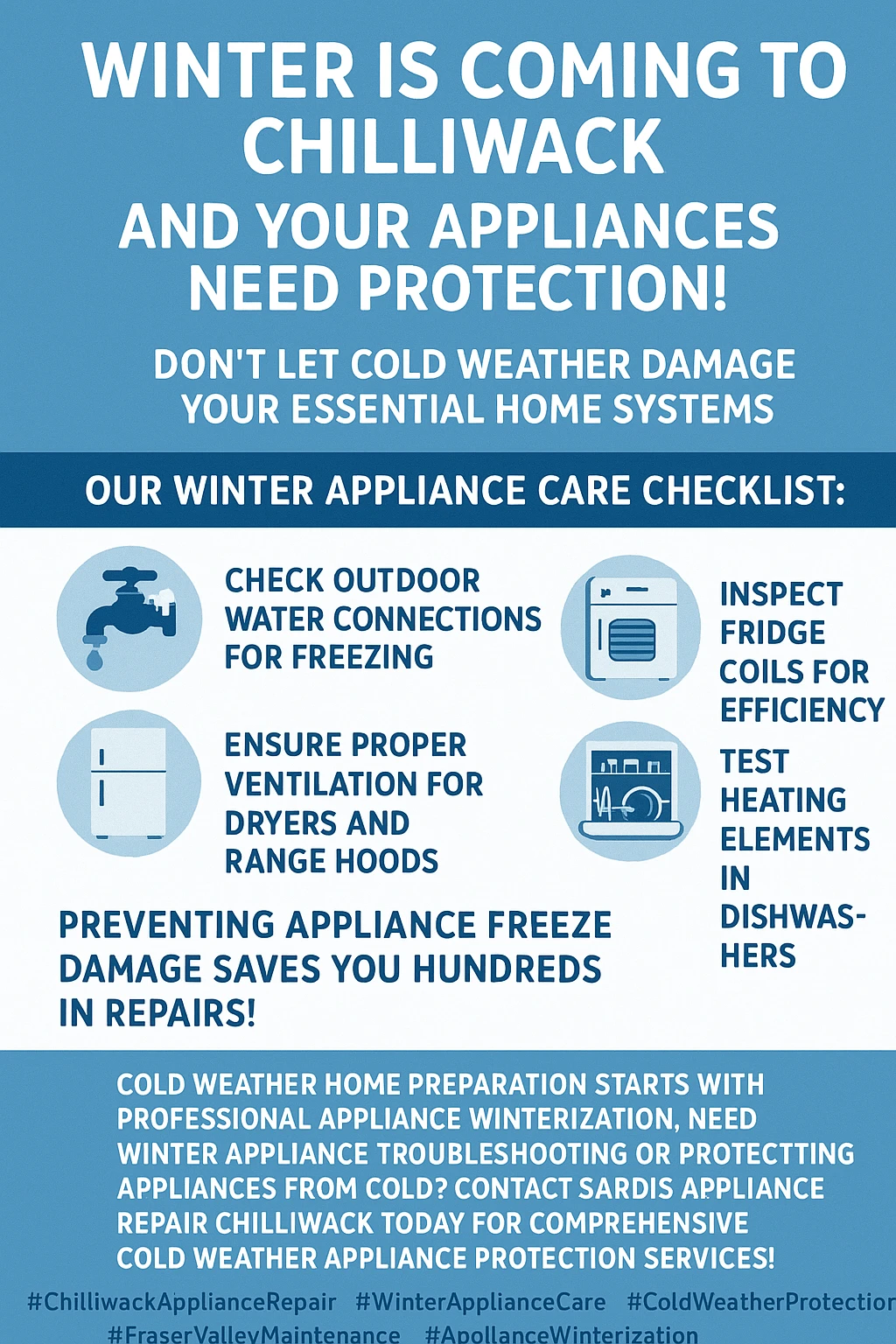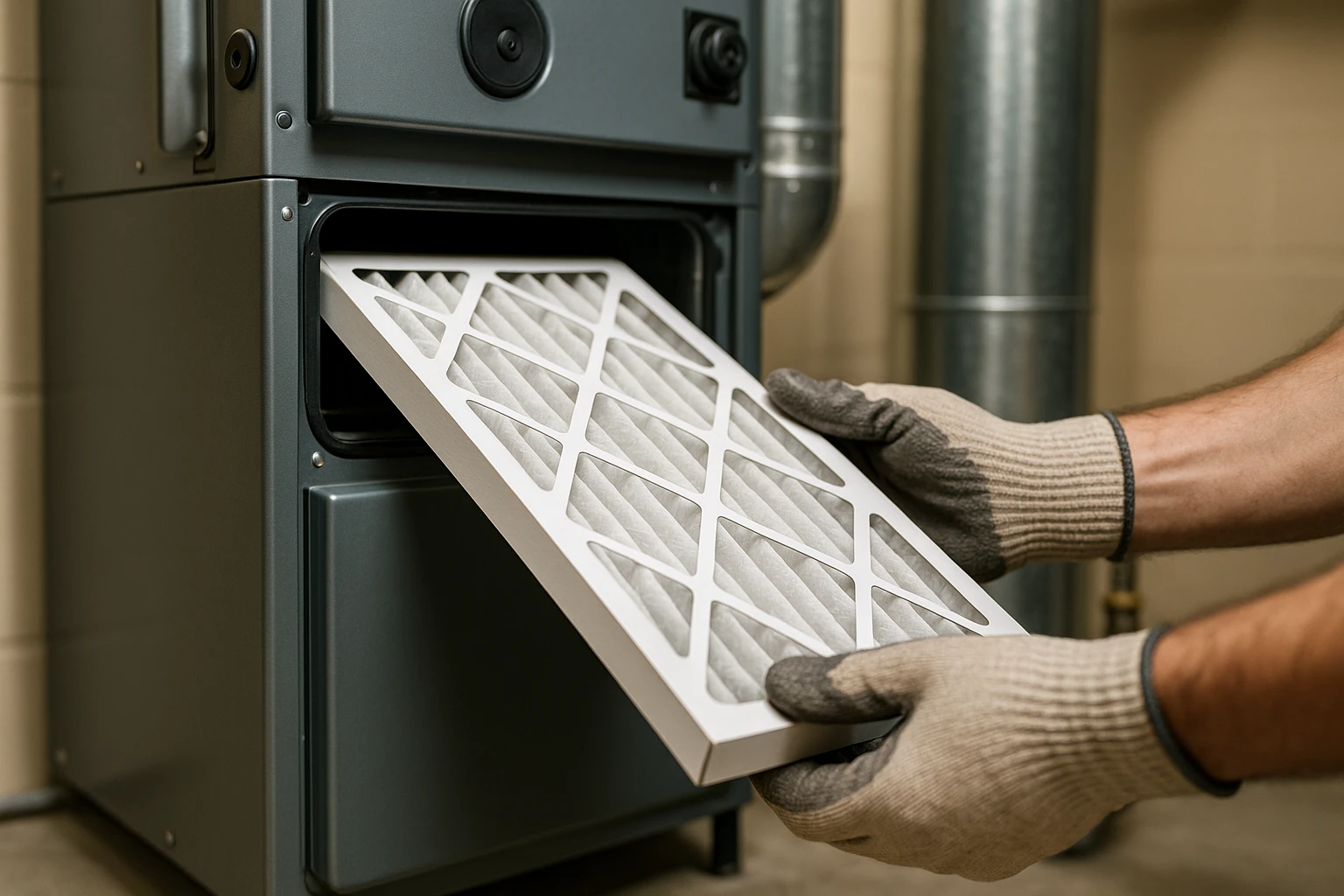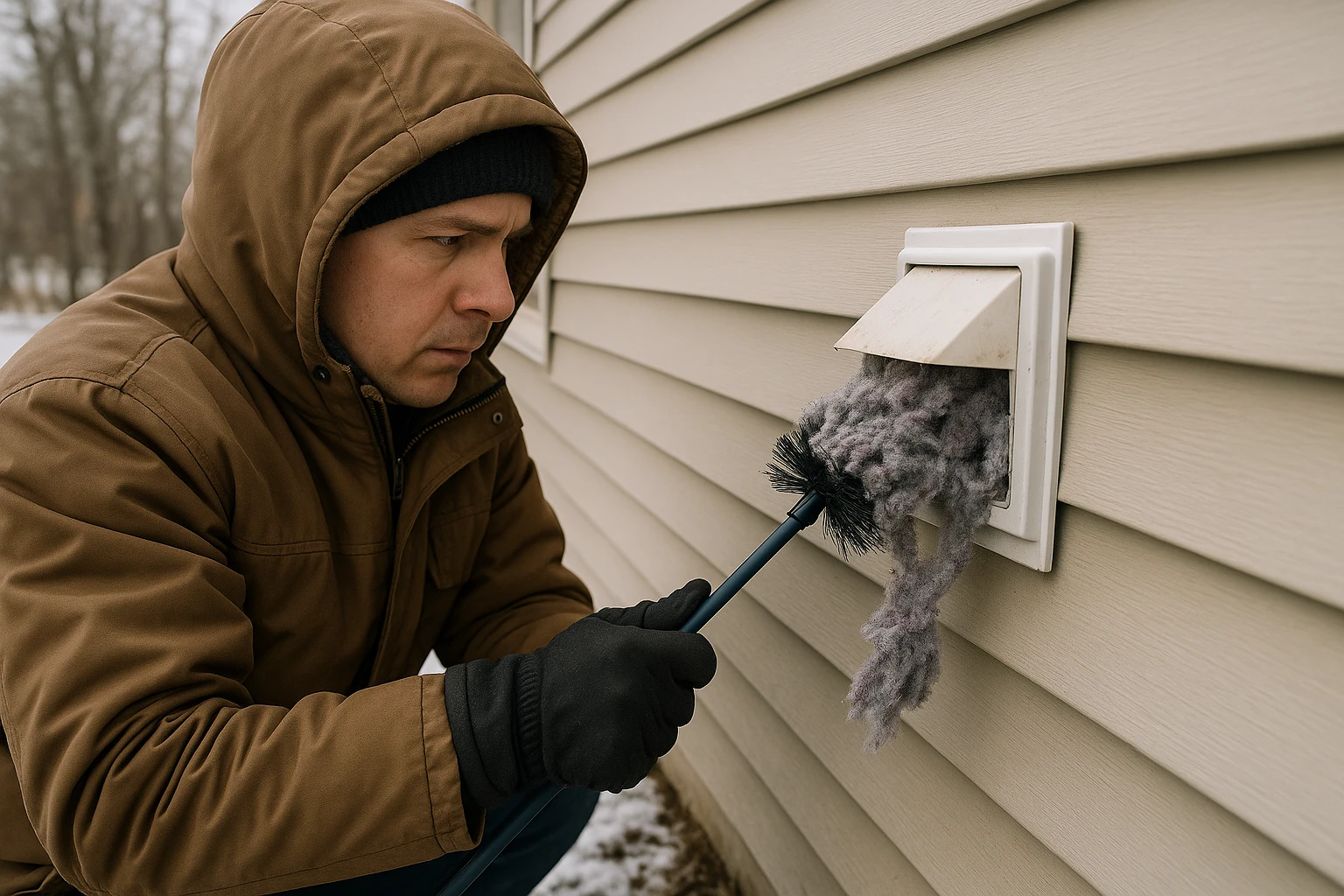Winter Appliance Prep: Protecting Your Home’s Essential Systems from Cold Weather Damage
Wondering why your appliances seem to throw tantrums every winter, leaving you shivering without heat or stuck with spoiled groceries? Don’t worry – we’ve got the inside scoop on protecting your home’s hardest-working systems from Chilliwack’s chilly embrace, plus some game-changing maintenance tricks that’ll keep everything humming smoothly all season long.
Listen, I’ve been there. Picture this: it’s the dead of winter in Chilliwack, snow’s falling like crazy, and suddenly your dryer decides to take an extended vacation right when you need it most. Your wet clothes are piling up, the humidity in your house is through the roof, and you’re desperately googling appliance repair shops at 11 PM. Trust me, winter appliance breakdowns are basically the universe’s way of testing your patience when you’re already bundled up in three sweaters.
But here’s the thing – most winter appliance disasters are totally preventable with some smart prep work. Think of it like winterizing your car, except instead of checking your antifreeze, you’re making sure your washer’s drain hoses won’t freeze and your refrigerator can handle the extra workload from holiday cooking marathons. The good news? A little proactive TLC now can save you from those middle-of-the-night appliance emergencies that always seem to happen when repair shops are closed.
Winter in the Fraser Valley brings its own unique challenges for our home appliances. Between the temperature swings, increased humidity from all that rain, and the extra demand we put on our heating and laundry systems, our trusty appliances work overtime just to keep up. The secret sauce is understanding what harsh winter conditions do to your appliances and getting ahead of potential problems before they turn into full-blown disasters.
Key Takeaways:
- Proper winter prep can prevent costly appliance breakdowns during Chilliwack’s coldest months
- Temperature fluctuations and increased humidity are the biggest threats to appliance performance
- Simple maintenance tasks like cleaning vents and checking seals can extend appliance lifespan significantly
- Professional inspection services offer specialized knowledge for high-end appliances and complex systems
- Emergency preparedness includes knowing when to call certified technicians versus attempting DIY fixes

Understanding Winter’s Impact on Your Home Appliances

Winter weather doesn’t just make us want to hibernate under blankets – it puts serious stress on every appliance in your home. Cold temperatures, fluctuating humidity levels, and increased usage patterns create a perfect storm of potential problems. Your appliances are basically fighting a battle on multiple fronts, and understanding these challenges is the first step to protecting your investment.
Temperature swings are probably the biggest troublemaker. When it’s freezing outside but toasty inside, your appliances have to work harder to maintain their optimal operating temperatures. Your refrigerator’s compressor kicks into overdrive, your dryer struggles to expel moisture-laden air, and your dishwasher might have trouble with proper drainage when pipes get cold. It’s like asking your appliances to perform gymnastics while wearing winter coats – technically possible, but definitely not ideal.
Humidity changes mess with your appliances in sneaky ways too. All that moisture in the air from winter storms can cause condensation buildup inside your appliances, leading to mold growth, electrical issues, and premature wear on moving parts. Meanwhile, when your heating system dries out the indoor air, rubber seals and gaskets can become brittle and crack. It’s a delicate balance that requires some strategic intervention on your part.
Essential Pre-Winter Appliance Inspections
Before winter settles in for the long haul, every smart homeowner should conduct a thorough appliance inspection. Think of it as your pre-flight checklist – you wouldn’t take off in an airplane without checking all the systems, right? Same principle applies to your home appliances. A systematic approach to inspecting each appliance can reveal potential problems while they’re still manageable and inexpensive to fix.
Start with your most critical appliances – the ones that would cause major disruption if they failed. Your refrigerator, heating system, and water heater top this list. Check door seals by doing the dollar bill test: close a dollar bill in the door, and if you can pull it out easily, the seal needs attention. Look for any unusual noises, inconsistent temperatures, or signs of wear that might indicate trouble brewing. These early warning signs are like your appliances’ way of sending up flares before they completely give up.
Don’t forget about the appliances that see increased winter use. Your dryer will be working overtime with all those wet clothes and heavy winter gear. Check the lint trap, inspect the exhaust vent for blockages, and make sure the drum spins freely without any grinding noises. Your dishwasher might be handling extra dishes from holiday entertaining, so verify that spray arms aren’t clogged and the drain is flowing properly. These preventive checks take maybe an hour but can save you hundreds in emergency repair calls.
Pay special attention to any appliance that vents to the outside. Cold air infiltration through damaged or poorly sealed vents can affect performance and energy efficiency. Walk around your home’s exterior and check all appliance vents for damage, blockages, or gaps where cold air might sneak in. A simple visual inspection can reveal issues like bird nests in dryer vents or damaged vent covers that need replacing before the really cold weather hits.
Consider documenting your findings with photos and notes. This creates a baseline for future inspections and helps you track any changes over time. If you notice something that looks questionable but isn’t immediately problematic, having documentation helps professional technicians understand the history when you do need service. Plus, many appliance warranties require proof of regular maintenance, so keeping records protects your investment.
Protecting Your Heating and Cooling Systems
Your HVAC system is basically the heart of your home during winter months, pumping warm air throughout your living spaces while working incredibly hard to maintain comfortable temperatures. Just like any hardworking system, it needs some TLC to perform reliably when you need it most. The last thing anyone wants is a heating system failure during a Chilliwack cold snap, especially when repair technicians are swamped with emergency calls.
Filter replacement is hands-down the most important thing you can do for your heating system. A clogged filter forces your system to work harder, uses more energy, and can actually damage expensive components like the blower motor. During winter, when your system runs constantly, filters get dirty faster than usual. Check your filter monthly, and don’t be surprised if it needs changing more frequently than the manufacturer’s recommendations. A $20 filter replacement beats a $500 blower motor replacement any day of the week.

Clear the area around your heating units and ensure proper airflow. I’ve seen too many homeowners stack boxes or holiday decorations around their furnace, not realizing they’re creating a fire hazard and reducing system efficiency. Keep at least three feet of clearance around your heating equipment, and make sure all vents throughout your home are unobstructed. Moving furniture away from heating vents isn’t just about comfort – it prevents overheating and extends equipment life.
Heat pumps deserve special attention since they work differently than traditional furnaces. These systems extract heat from outdoor air, which becomes more challenging as temperatures drop. Clear any snow, ice, or debris from around your outdoor heat pump unit, but be gentle – those fins are delicate and expensive to repair. If ice builds up on the unit, don’t try to chip it off; most modern heat pumps have defrost cycles that handle this automatically. However, if you notice excessive ice buildup that doesn’t clear within a few hours, it might indicate a deeper problem requiring professional attention.
Don’t neglect your ductwork either. Leaky ducts waste energy and force your system to work harder. Check accessible ductwork in basements, crawl spaces, and attics for gaps, disconnections, or damaged insulation. Sealing duct leaks with appropriate materials can improve system efficiency by 15-20%, which translates to real money savings on your heating bills. Professional duct sealing services are available, but homeowners can handle minor repairs with duct sealant and metal tape.
Schedule professional maintenance before peak season if you haven’t already. Certified technicians can identify subtle issues that might not be obvious to homeowners, like slightly misaligned components, early signs of wear, or calibration issues that affect efficiency. Professional maintenance typically includes cleaning, lubrication, safety checks, and performance optimization that keeps your system running smoothly all winter long.
Preparing Kitchen Appliances for Increased Winter Demands
Winter transforms our kitchens into command centers of comfort food production and holiday entertaining, putting extra stress on appliances that are already working harder due to cold weather. Your kitchen appliances face a double challenge: dealing with temperature fluctuations while handling increased cooking and cleaning demands from holiday meals, comfort food marathons, and general winter nesting activities.
Refrigerators work overtime during winter months, not just because of holiday food storage but because cold kitchen temperatures can actually make them work harder to maintain proper internal temperatures. Clean those condenser coils – they’re usually located on the back or bottom of your fridge and collect dust, pet hair, and kitchen grease over time. Dirty coils force your compressor to work harder and use more energy. A simple vacuuming every few months can extend your refrigerator’s life and keep energy bills reasonable.
Check your refrigerator’s door seals carefully, especially if you’ve noticed frost buildup or inconsistent temperatures. Cold winter air makes rubber seals contract and become less flexible, potentially creating gaps that let warm air in. The dollar bill test works great here – if you can easily pull a dollar bill out of a closed door, the seal needs attention. Cleaning seals with mild soap and water can sometimes restore flexibility, but severely damaged seals need replacement to maintain efficiency.
Your dishwasher faces unique winter challenges, particularly with water temperature and drainage issues. Cold kitchen temperatures can affect water heating efficiency, and if your dishwasher drains through pipes that run through unheated spaces, drainage problems can develop. Run hot water at your kitchen sink before starting the dishwasher to ensure it starts with appropriately heated water. Check the garbage disposal if your dishwasher drains through it – a clogged disposal can back up into your dishwasher and create nasty cleanup situations.
Range hoods and exhaust fans become more important during winter cooking sessions but often get neglected until they stop working properly. Clean or replace range hood filters, which can become clogged with grease and cooking vapors from increased winter cooking. Check that exterior vents aren’t blocked by snow, ice, or debris – blocked vents can cause moisture and cooking odors to linger in your kitchen, creating air quality issues and potential mold problems.
Don’t forget about smaller appliances that see increased use during winter months. Coffee makers, slow cookers, and baking appliances all work harder during the cozy season. Descale your coffee maker using manufacturer-recommended methods, clean slow cooker seals and heating elements, and check that oven temperature calibration is accurate before holiday baking season begins. These simple maintenance tasks prevent mid-meal disasters and ensure consistent results for all your winter comfort food adventures.
Laundry System Winter Preparation
Laundry systems face some of the biggest challenges during winter months, dealing with heavier loads, damp clothing, and ventilation issues that can spell disaster if not properly addressed. Your washer and dryer work as a team, and when winter throws curveballs like increased humidity, heavier fabrics, and limited outdoor air circulation, both machines need extra support to perform reliably.
Dryer vents are absolutely critical to address before winter weather settles in. A blocked dryer vent isn’t just an efficiency issue – it’s a serious fire hazard and can cause dangerous carbon monoxide buildup in gas dryers. Walk outside and check where your dryer vents; make sure the exterior vent cover opens properly when the dryer runs and closes securely when it’s off. Clear any lint buildup from the exterior vent, and consider having professional vent cleaning if it’s been more than a year since the last service.

Inside your home, clean the lint trap thoroughly – not just the surface lint, but the fine fibers that work their way into the trap housing. Use a vacuum with a narrow attachment to remove lint from the trap slot, and wash the actual lint screen with warm soapy water to remove fabric softener residue that can block airflow. A clean lint system prevents overheating, reduces drying times, and extends dryer life significantly.
Washing machines need attention too, particularly the drain system and water supply lines. Cold temperatures can affect drain performance, and if your washer drains into a utility sink or floor drain, make sure those aren’t prone to freezing in unheated areas. Check washing machine hoses for signs of bulging, cracking, or mineral buildup – cold weather can make damaged hoses more likely to fail catastrophically. Consider upgrading to braided steel hoses if you’re still using basic rubber ones.
Water temperature becomes more variable during winter months, affecting wash quality and potentially causing problems with certain detergents and fabric care products. Run a cleaning cycle or use washing machine cleaning tablets to remove soap residue, mineral deposits, and any mold or mildew that might develop from winter’s increased humidity. Leave the washer door open between loads when possible to allow air circulation and prevent moisture-related problems.
Level your washer and dryer properly, especially if you’ve noticed increased noise or vibration. Winter’s freeze-thaw cycles can actually shift appliances slightly, and unbalanced machines work harder, wear out faster, and create noise issues that become more noticeable when windows stay closed all season. Most washers and dryers have adjustable feet that allow for precise leveling – a few minutes with a bubble level can eliminate annoying vibrations and extend component life.
Frequently Asked Questions
How often should I clean my appliances during winter months?
During winter, most appliances benefit from more frequent cleaning due to increased usage and challenging environmental conditions. Clean your dryer’s lint trap after every load, and deep-clean the entire lint system monthly. Refrigerator coils should be vacuumed every 2-3 months during winter, while dishwasher filters need monthly attention. Range hood filters typically need cleaning or replacement every 6-8 weeks during peak cooking season.
The key is paying attention to performance changes rather than sticking rigidly to a schedule. If your dryer takes longer to dry clothes, clean the lint system immediately. If your refrigerator seems to run constantly, check and clean the coils. Winter conditions vary significantly, so appliance maintenance needs can change based on humidity levels, temperature fluctuations, and usage patterns.
Keep a simple maintenance log or calendar reminder system to track when you last serviced each appliance. This prevents the “I think I cleaned that recently” guessing game and ensures nothing gets overlooked during busy winter months when appliance reliability is most critical.
What temperature should I keep my home to protect appliances?
Maintaining consistent indoor temperatures between 65-75°F provides the best environment for most home appliances. Extreme temperature swings force appliances to work harder and can cause condensation issues that damage internal components. Your refrigerator, in particular, struggles with efficiency when room temperatures drop below 60°F or rise above 80°F.
Avoid dramatic temperature changes when possible. If you lower the thermostat when away from home, keep the adjustment moderate – dropping the temperature more than 8-10 degrees can actually stress appliances more than the energy savings justify. Gradual temperature changes are much easier on appliances than sudden shifts.
Unheated spaces like garages, basements, or utility rooms need special consideration. Appliances in these areas may need supplemental heating or insulation to function properly. Consult with appliance professionals about specific temperature requirements for appliances in marginal spaces, especially high-efficiency models that may have stricter environmental needs.
Should I unplug appliances during power outages?
Yes, unplugging sensitive appliances during power outages protects them from power surges when electricity is restored. Refrigerators, washing machines, dryers, dishwashers, and any appliance with electronic controls should be unplugged during extended outages. This prevents damage from voltage spikes that commonly occur as power grids restart after outages.
Wait at least 5 minutes after power returns before plugging appliances back in. This allows the electrical system to stabilize and reduces the risk of surge damage. Plug in your most critical appliances first – typically the refrigerator – then add others gradually to avoid overloading circuits.
Consider investing in whole-house surge protection or individual surge protectors for expensive appliances. Modern appliances contain sophisticated electronic components that are vulnerable to power fluctuations, and surge protection is much cheaper than appliance replacement. Document any unusual behavior after power outages, as storm-related electrical issues sometimes cause delayed problems that may be covered by insurance.
When should I call a professional versus attempting DIY maintenance?
Call professionals for any maintenance involving gas connections, electrical work beyond simple plug-in appliances, or refrigerant systems. These systems require specialized knowledge and tools, and DIY attempts can create safety hazards or void warranties. Similarly, if an appliance is still under warranty, professional service may be required to maintain coverage.
Homeowners can safely handle cleaning tasks, filter replacements, basic adjustments, and simple troubleshooting like checking for clogs or cleaning vents. However, if troubleshooting reveals problems with internal components, unusual noises, or performance issues that cleaning doesn’t resolve, professional diagnosis is worthwhile.
Trust your instincts about complexity and safety. If a maintenance task seems beyond your comfort level or requires specialized tools, professional service is usually cost-effective compared to potential repair costs from DIY mistakes. Many appliance service companies offer maintenance plans that include regular inspections and cleaning, which can be valuable for homeowners who prefer professional oversight of their appliance systems.
Wrapping Up
Winter appliance preparation isn’t just about avoiding inconvenient breakdowns – it’s about protecting significant investments in your home while ensuring your family’s comfort during Chilliwack’s challenging winter months. The strategies we’ve covered, from simple cleaning routines to professional maintenance scheduling, work together to create a comprehensive defense against winter’s harsh effects on your home’s essential systems.
Remember that consistency beats perfection when it comes to appliance maintenance. Regular attention to simple tasks like cleaning lint traps, checking seals, and maintaining proper clearances around equipment prevents the vast majority of winter appliance problems. These small investments of time and effort pay huge dividends in reliability, energy efficiency, and extended appliance life.
Don’t hesitate to combine DIY maintenance with professional service when appropriate. While homeowners can handle many routine maintenance tasks, complex appliances benefit from periodic professional attention that can identify subtle problems before they become expensive repairs. The goal is keeping your home’s systems running smoothly through winter’s challenges, whether that’s through your own careful attention or the expertise of qualified technicians who understand the unique demands of Fraser Valley winters.
 (604) 305-2992
(604) 305-2992 
 Schedule An Appointment
Schedule An Appointment 
